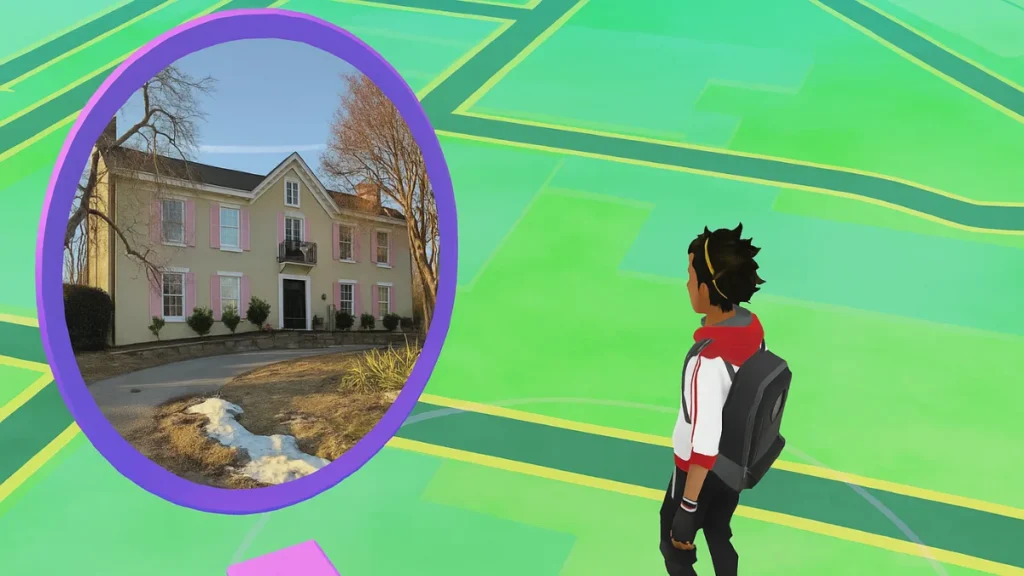A Pokémon GO player appears to have successfully had their own house approved as a PokéStop. This created a convenient in-game location that can be accessed without leaving home. PokéStops are typically tied to public points of interest. This unusual approval — involving a historic residence — shows that Niantic’s nomination rules can sometimes apply in unexpected ways.

How PokéStop Nominations Normally Work
In Pokémon GO, adult players at Level 35 or above can nominate new PokéStops through the in-game Wayfarer system. This is done using the uploads function found in the settings menu. Niantic’s official guidelines for approval are strict:
- The location must be accessible to pedestrians.
- It should be at a permanent, safe location.
- Private residences are not eligible, even if they are historic, unless they also serve a public function.
Most rejected submissions fail because they do not meet one or more of these criteria. The private property restriction is the most common reason for rejection.
PlayStation 5 Pro Console
See also: Delightful Days Taken Over Collection Challenge Guide – Pokémon GO
How a Historic Home Became a Pokemon GO House PokéStop
According to Reddit user Spirited-Manager-81, the newly approved stop is located at her friend’s house — a large, historic property built by a former legislator. This historical status appears to have allowed it to bypass the “no private residences” rule, since it’s recognized as a local landmark.
The PokéStop’s identifying details remain hidden for privacy. The case shows that properties serving as both residences and recognized points of interest — such as museums or mixed-use buildings — can occupy a grey area in nomination eligibility.
Why a House PokéStop Can Be Risky for Pokemon GO Players
The approval shows that exceptions exist, but nominating private residences carries risks. Locations can be traced through public data like real estate listings or image search tools. This can lead to unwanted visitors.
Niantic’s rules are clear: breaking guidelines can result in warnings or permanent bans. The company also reserves the right to remove any PokéStop, Power Spot, or route at its discretion.
Why Most Players Shouldn’t Try This
Although this nomination was approved, most trainers will not have the same outcome. To improve the chances of a successful submission while protecting your account:
- Follow the official guidelines — avoid nominating purely private residences.
- Choose accessible locations — focus on public-facing points with safe pedestrian access.
- Select permanent features — landmarks, public art, and long-standing facilities meet Niantic’s criteria.
- Protect safety and privacy — submit images of signage or public markers instead of the private building itself.
This rare example of a residence becoming a PokéStop shows that Niantic’s rules, while strict, can allow for exceptions. Locations with verified historic or public value may qualify. For most trainers, however, it is more practical — and safer — to focus nominations on clearly eligible public spaces like parks, art installations, and community centers.
See also: Pokemon GO Dynamax Cannon Adventure Effect: Eternatus Event Guide
Enjoying a PokéStop from the comfort of home is tempting. Yet the risks to privacy and account security make it a strategy best avoided.
More Gaming Guides
- 01All Vehicles in My Winter Car – Complete Drivable and NPC Vehicle List
- 02How to Get Shredder Gyros in ARC Raiders (Best Farming & Drop Guide)
- 03The Division 2 Y7S3 Mutiny Week 5 Scout 5 Solutions: Complete Manhunt Guide
- 04A Guide to Why You Should Create Board Game Prototype
- 05FC 26 Winter Wildcards Challenge 3 SBC Tasks, Solutions, and Cheap Squad Guide
- 06Duet Night Abyss 1.1 Update Patch Notes (Huaxu Expansion)
- 07How to Grow Shrooms in Schedule 1 (Step-by-Step Guide)


